The building of the Újpalota housing estate started in 1969 in a large, nearly undeveloped area where only about 300 flats had to be demolished due to the construction. The housing estate was designed by the staff of the Tervezésfejlesztési és Típustervező Intézet ('Institute of Design Development and Type Design') under the leadership of Tibor Tenke. 12,752 apartments were planned, but 15,500 were completed. The 3rd building-prefabrication factory in Budapest made the type-plan-based elements of the buildings.
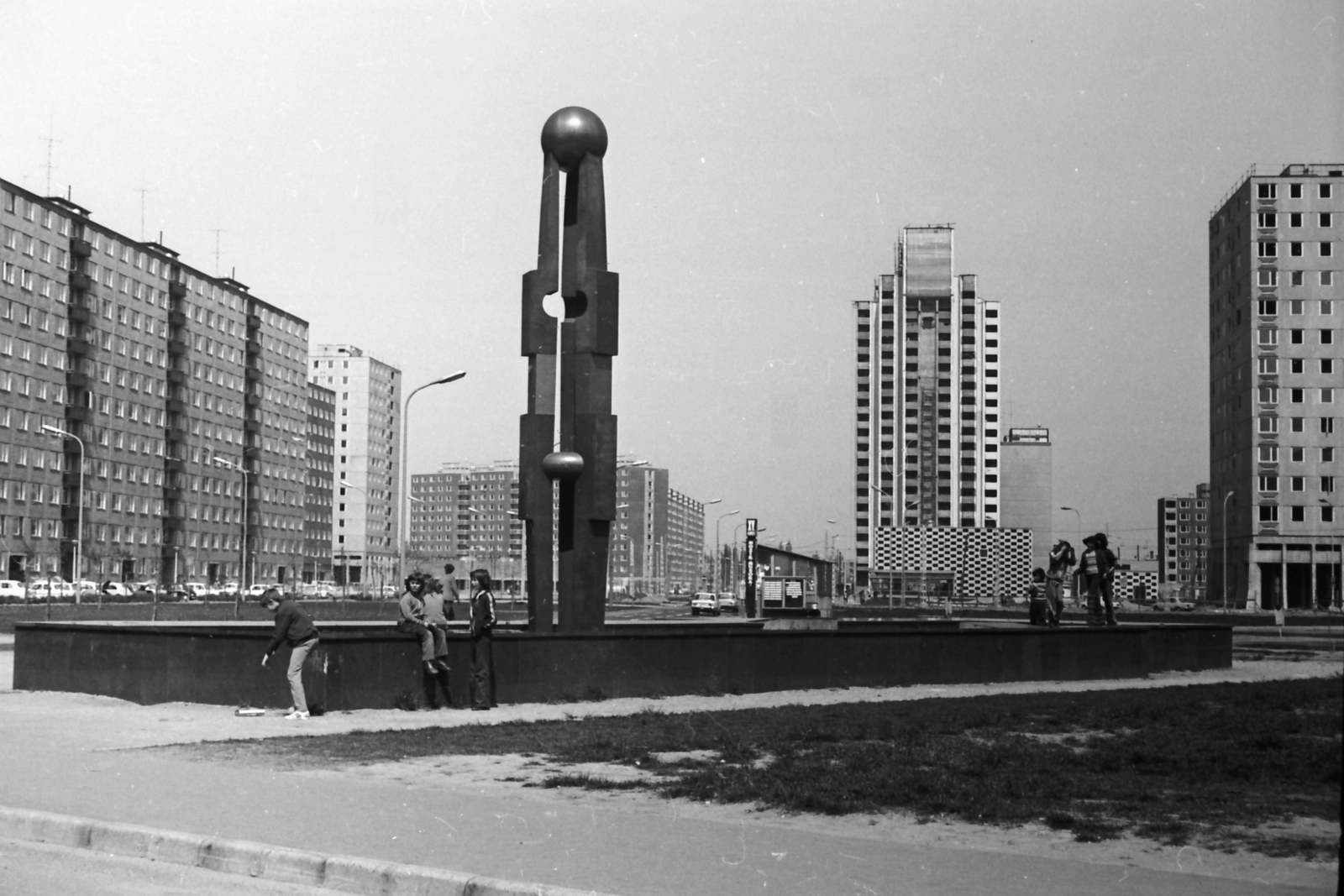
The centre of Újpalota in 1975 with the Centenary monument (Photo: Fortepan/No.: 41726)
The first house was completed in 1971 at 1 Hevesi Gyula Road (now 1 Nyírpalotai Road). János Gyugyella and his family were the first who moved into the 353-flat building on 16 April 1971. Prominent members of the MSZMP (Hungarian Socialist Workers' Party) and the district's local council, and the chairman of the Executive Committee of the 15th District Local Council also greeted the family on the occasion.
The contemporary papers wrote that János Gyugyella was a locksmith of the Hungarian Ship and Crane Factory and moved into the three-room apartment on the 2nd floor with his wife, two-and-a-half-year-old boy and the grandparents. Until then, the family had lived in a temporary apartment made up of business premises.
For those moving to the Újpalota housing estate, the modern, all-comfort housing was a real step forward, as they used to live in life-threatening, small, or overcrowded flats. In the 1960s, there was a huge shortage of housing in Budapest – and in several cities of the country – as forced industrial development attracted a lot of people to the cities.
Plenty of people lived in outdated homes built decades earlier. One million housing applicants were registered nationwide in 1972.
The average number of rooms in the new apartments of Újpalota housing estate was 2.5. Statistically, there were 482 people for a hundred flats, i.e., an average of 4.8 people lived in one apartment. This was higher than the average in Budapest at the time, which was 3.15 for the whole city. When designing Újpalota, it was calculated that one person would have 12 square metres of space in the apartment.
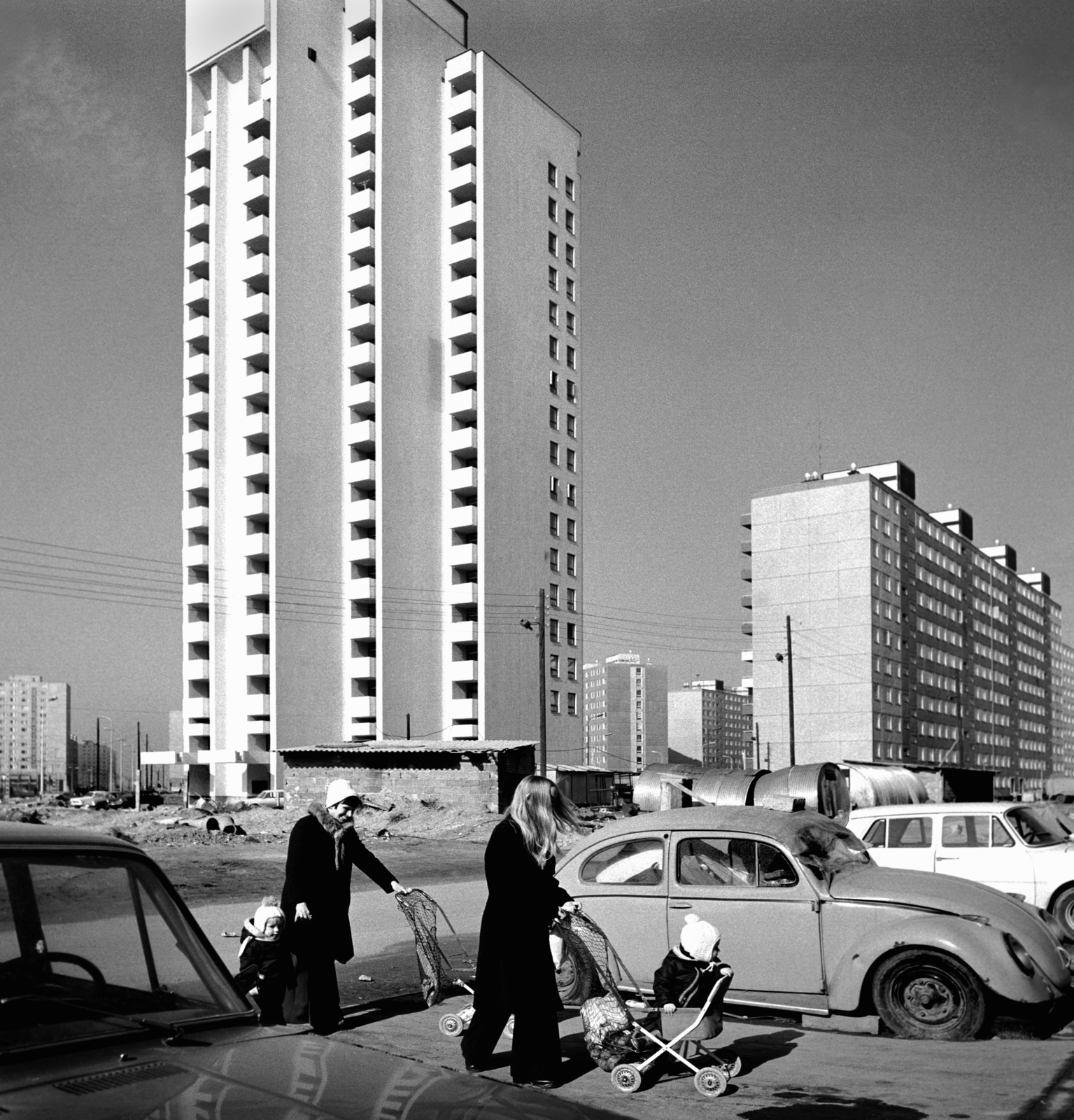
The Újpalota Water Tower House in 1972, which is a tower block and a water tower at the same time (Photo: Fortepan/No.: 184675)
Many types of houses were built on the housing estate, with apartments of different sizes. The average apartment size was 66 square metres in the five-story buildings, 52 square metres in the mid-rise houses, and 50 square metres in the tower block.
1,300 flats were completed in Újpalota by 1971, and it was planned that new residents could move in by the first half of the year. 2,600 flats were to be completed by the end of the year, while the entire housing estate was to be built by 1975 to house a total of 60,000.
On 5 February 1972, Magyar Hírlap published a long article about the housing estate.
“Újpalota will be the best of all housing estates. The biggest that has ever been built in the country, the most modern, the most beautiful, the fastest hosting – and the most controversial.”
Nearly a year after the first family moved in, thousands lived in Újpalota, who faced similar problems to those living in new housing estates. As the above-mentioned article wrote:
“Újpalota is built on the outskirts of the city, and the shops are further away in the area than elsewhere in the capital. And there are only few of them. The first supermarket opened in early December on the housing estate. So far, a grocery booth was available for the residents. At this point, the supply of essential food and household items is acceptable. But for a population that swells to fourteen thousand by spring, the norm already requires 5,200 square metres of commercial space – the plans account for 1,000 square metres. The primary school on the housing estate, operating in two shifts, is already overcrowded – according to the district council statistics, 24 classrooms and 350 kindergarten places are the debt of the builders.”
Besides, there was no pharmacy, hairdresser, or laundry on the housing estate at that time. Residents also complained that there was only one bus line, No. 73, which was crowded in the rush hour because solo buses were used, and the stops were also far away. In the original plans, metro line No. 4 would have ended at Újpalota, but this never exceeded the phase of rough plans due to the lack of money.
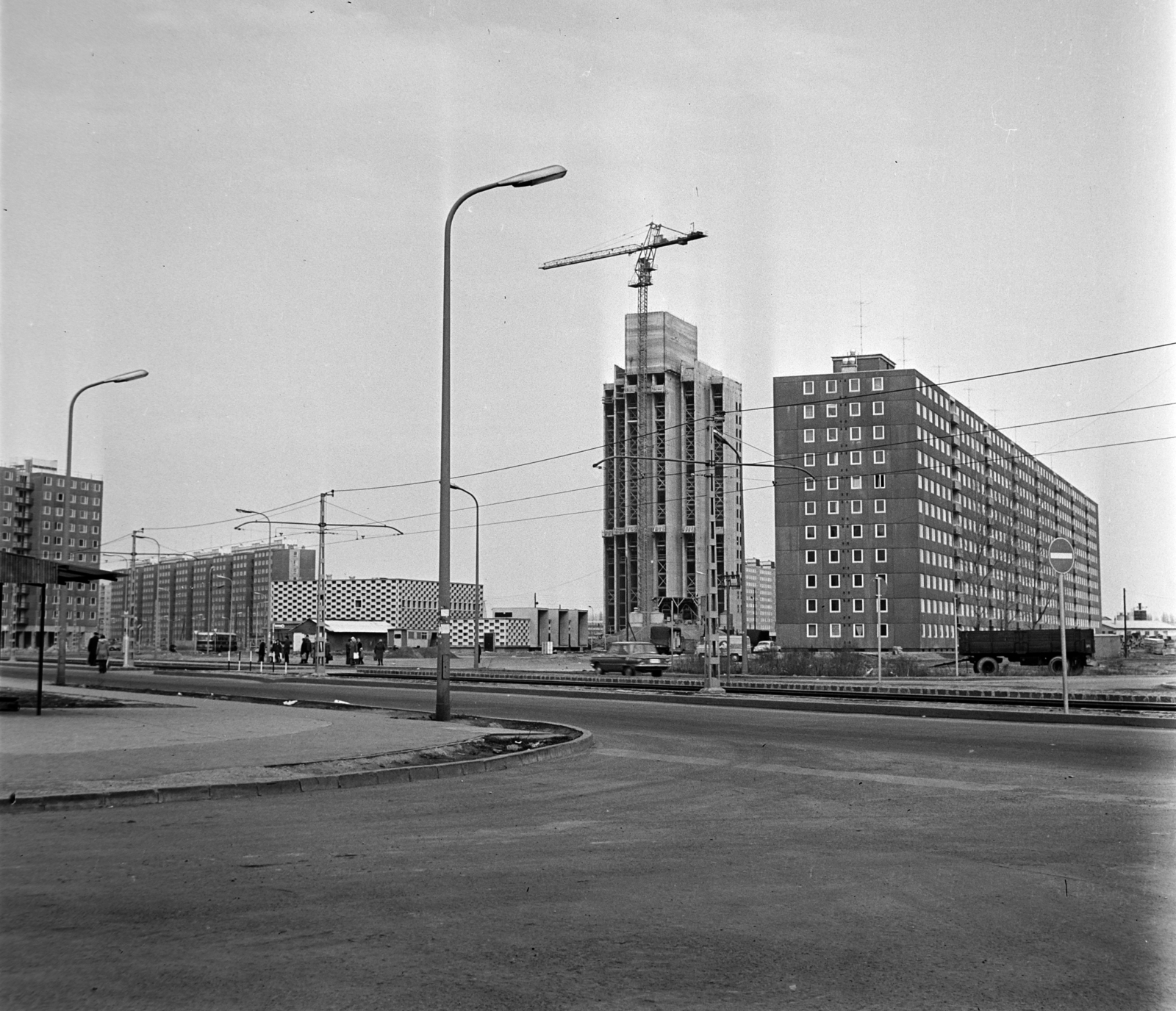
View of Zsókavár Street in 1974 (Photo: Fortepan/No.: 195431)
The construction of the housing estate continued: 15-16 new flats were assembled daily. In the previously quoted article in Magyar Hírlap, the experts pointed out that while they can build flats on a large scale, they cannot assemble the service units, schools, and shops in the same way, hence the slow progress.
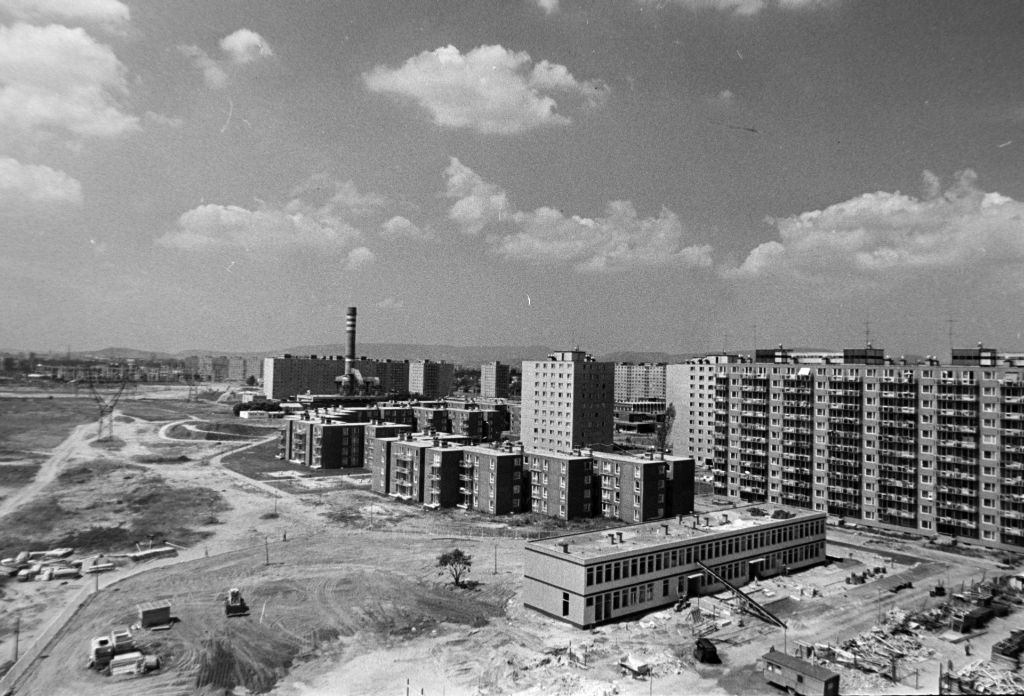
Construction on the housing estate in 1974, when schools were also already building (Photo: Fortepan/No.: 194232)
The fact that the construction of a business premise was significantly more expensive also contributed to the delay; in 1972, in Újpalota, their cost exceeded 10 thousand Forints per square metre. The article summarized the difficulties:
“The architect’s bitterness is understandable. After dozens of mandatory consultants', approvers', reviewers', conciliators', etc. acceptance, dozens of subcontractors need to be synchronized. And – reading the documents – it is like everyone speaks Hungarian differently. Consequently, despite the design changes and the heavily varied blueprints, it is not built as documented.”
If one thinks about it, homes for 60,000 people were built here in a few years. The buildings on the housing estates also differed in their shape and height, and they used coloured prefabricated housing factory elements at that time.
The total investment was huge, costing more than 5 billion HUF. Even then, the residents could buy the flats in 30-year instalments, for 180-190 thousand HUF, although the real cost was 250 thousand HUF per apartment. 3,000 homes were planned for rental housing provided by the Council.
Cover photo: The Újpalota housing estate in 1974 (Photo: Fortepan/No.: 194268)

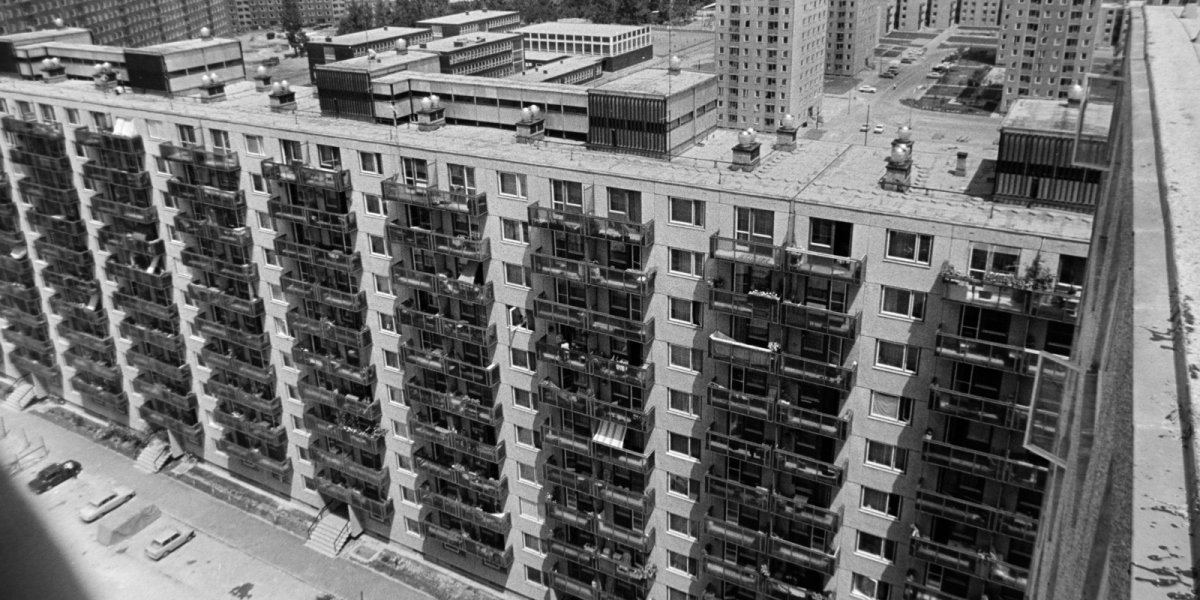


































Hozzászólások
Log in or register to comment!
Login Registration